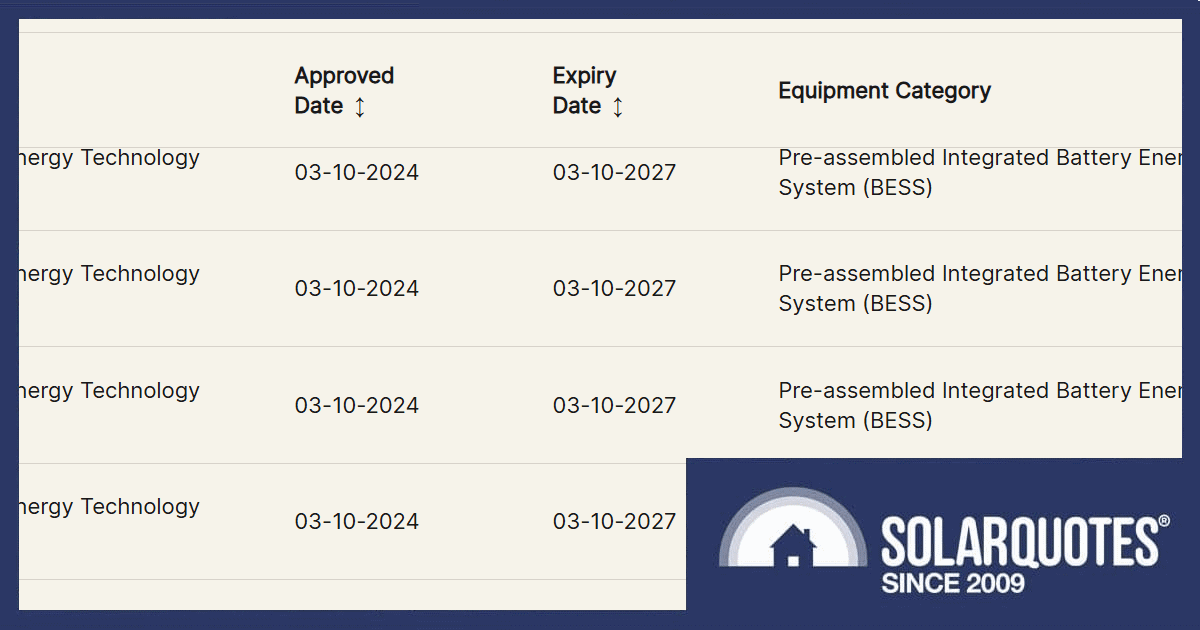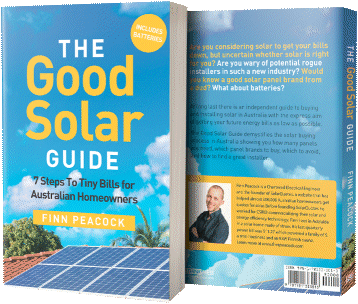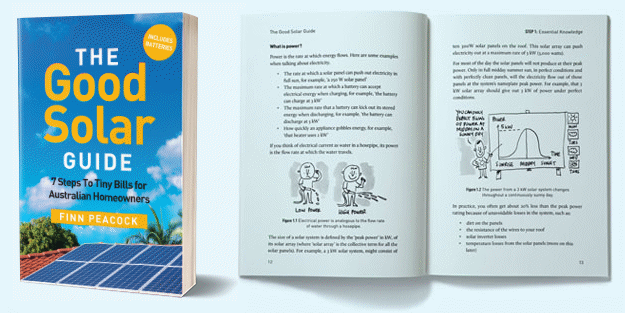
The Clean Energy Council’s (CEC’s) Approved Product lists are big. Really big. Discover how many products are listed, the number of applications rejected, plus other related facts and figures.
The Clean Energy Council is gatekeeper for solar products in Australia — listing solar panels, inverters, and batteries meeting Australian standards. But without the CEC’s stamp of approval, the national solar subsidy and home battery rebate can’t be claimed and grid connection will likely be refused. To be eligible for those incentives and grid-connection, the product must be CEC-approved at the time of installation, not purchase.
Certification needs to be renewed every three years. If certification isn’t renewed, it doesn’t mean the product suddenly stops working or has to be uninstalled; just that new installations of that product aren’t approved unless it’s a like-for-like replacement under certain conditions.
So, how many products are on the lists? As at the end of July 2025:
- Solar panels: 2,685
- Inverters: 1,755
- Batteries: 825
These aren’t just models, but variants among models. Sigenergy’s Sigenstor modular battery is a good example. One battery system per se, lots of variations and individual components, and more than 100 individual listings. No doubt listing was a nightmare for Sigenergy (and the CEC for that matter), but it would have been a tidy earner for the Council.
The CEC charges $5,500 + GST per application, which can include up to 10 battery or inverter models or up to 20 solar panel models. But ponying up the cash doesn’t guarantee a listing. There’s first an administrative review and then an engineering review. And if the CEC rejects an application by the time it gets to engineering review stage or due to non-response from the applicant within a specified timeframe, there’s no refund.
You can read more about the product listing process and fee structure here.
How Many Applications Are Rejected?
Based on applications processed last financial year (July 2024 – June 2025), a significant proportion didn’t make the grade.
- Panels: 185 applications / 28 rejected (~15%)
- Solar Inverters: 212 applications / 17 rejected (~8%)
- Batteries: 154 applications / 22 rejected (~14%)
Rejection doesn’t necessarily mean the product itself is crap, but the application or supporting documentation may have been.
How Long Does CEC Approval Take?
This is a sore point among manufacturers and installers, and has been for many years. There have been complaints concerning the timeframe in getting new gear listed for as long as the Clean Energy Council has been tasked with approvals. In 2024, Australia’s Clean Energy Regulator told the CEC it would need to lift its game and the organisation brought on more resources to do so.
Early last month, we published figures on how long it was taking the CEC to begin the engineering technical assessment process. The following updated figures compare May vs. July, and bear in mind this is to just start that process. Full approval can take an additional 2 – 6 months (and even longer in some cases) depending on the completeness of applications.
- Solar panels: 3 weeks in May and 4 weeks in July.
- Inverters: 11 weeks in May and the same in July.
- Batteries: 12 weeks in May and 9 weeks in July.
CEC Approval Doesn’t Always Mean Great Products
The Clean Energy Council’s approved products lists can be a handy tool for consumers, just to confirm what they are considering buying is approved. But they aren’t a *guarantee* the product will be suited to their circumstances, good quality or well-supported.
Some iffy gear still gets through and while product quality, customer support and documentation might be fine at the time of listing, it may deteriorate after that. The CEC suspends or delist products it finds are no longer up to scratch, but particularly in the case of the latter it can be a case of shutting the gate well after the horse has bolted. And no matter how good a product is, shoddy installation can turn it into a problem.
This is where online tools such as SolarQuotes’ reviews centre and recommended solar brands charts can help whittle down the myriad choices of components (and installers). And if you use an installer SolarQuotes has referred through our free quoting service, there’s extra peace of mind with our Good Installer Guarantee.

 RSS - Posts
RSS - Posts



Changes tomorrow, 15 August.
”
Battery (energy storage device) terms and conditions
The terms and conditions below came into effect from 15 August 2023.
These Terms and Conditions will be published on the Clean Energy Council (CEC) website and are subject to change with three months’ notice. The Product manager will notify changes to these Terms, via notice on the website and email notification to Applicants.
Application requirements will be publicly available on the CEC website in the form of an application checklist. The Product Manager will notify changes to these requirements, via notice on the website and email notification to Applicants.
If an application is incomplete the CEC Product Manager may request additional information. If three consecutive incomplete applications are received from an Applicant, the CEC Product Manager may require a new application along with payment of a new application fee.
”
-cleanenergycouncil.org.au/industry-programs/products-program/batteries
Yet where is the Tesla Powerwall 3 expansion pack approval?
It was submitted more than 6 months ago. It appears the CEC is still falling behind its own benchmark for approval timelines.
Just read article regarding Tesla power wall 2 not renewed for approval. Is this just because Tesla didn’t renew their approval or is there 2 more to it. Can’t believe something 2 years old no longer able to be connected to grid.